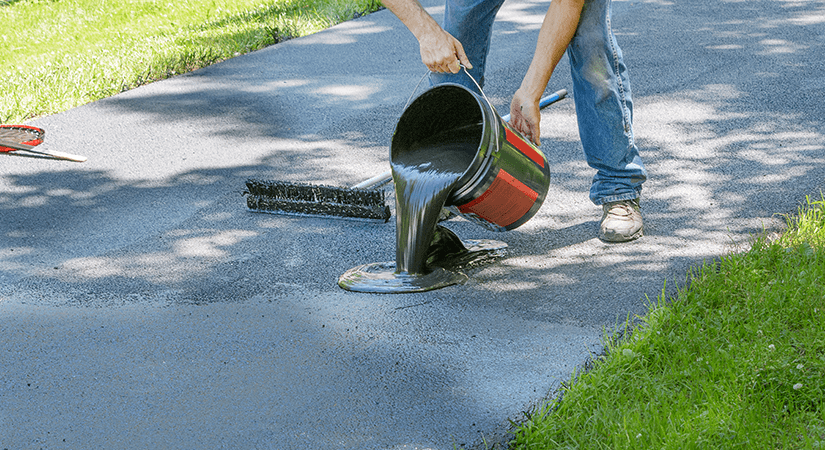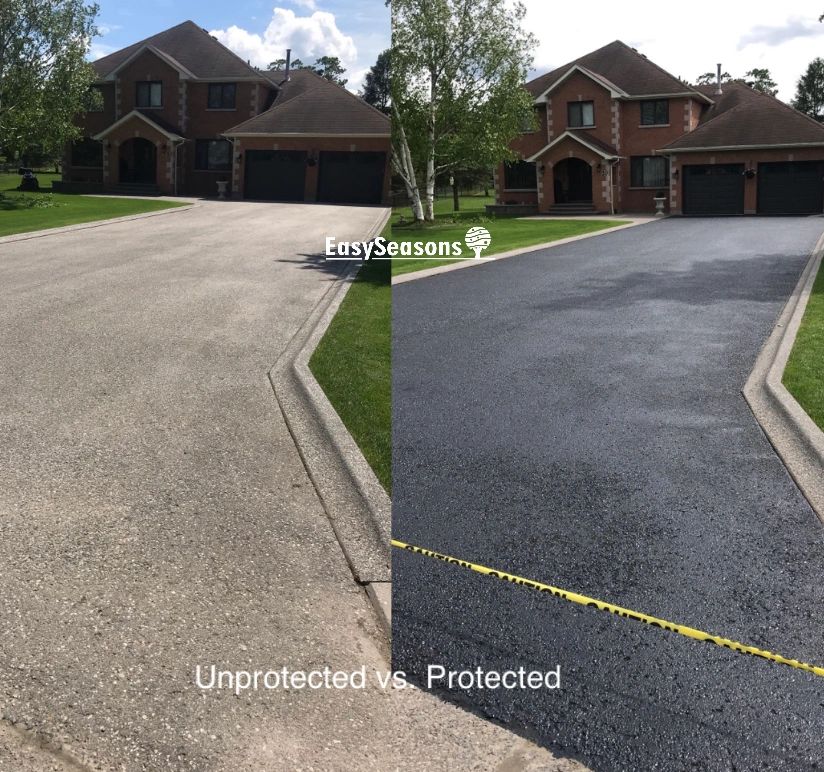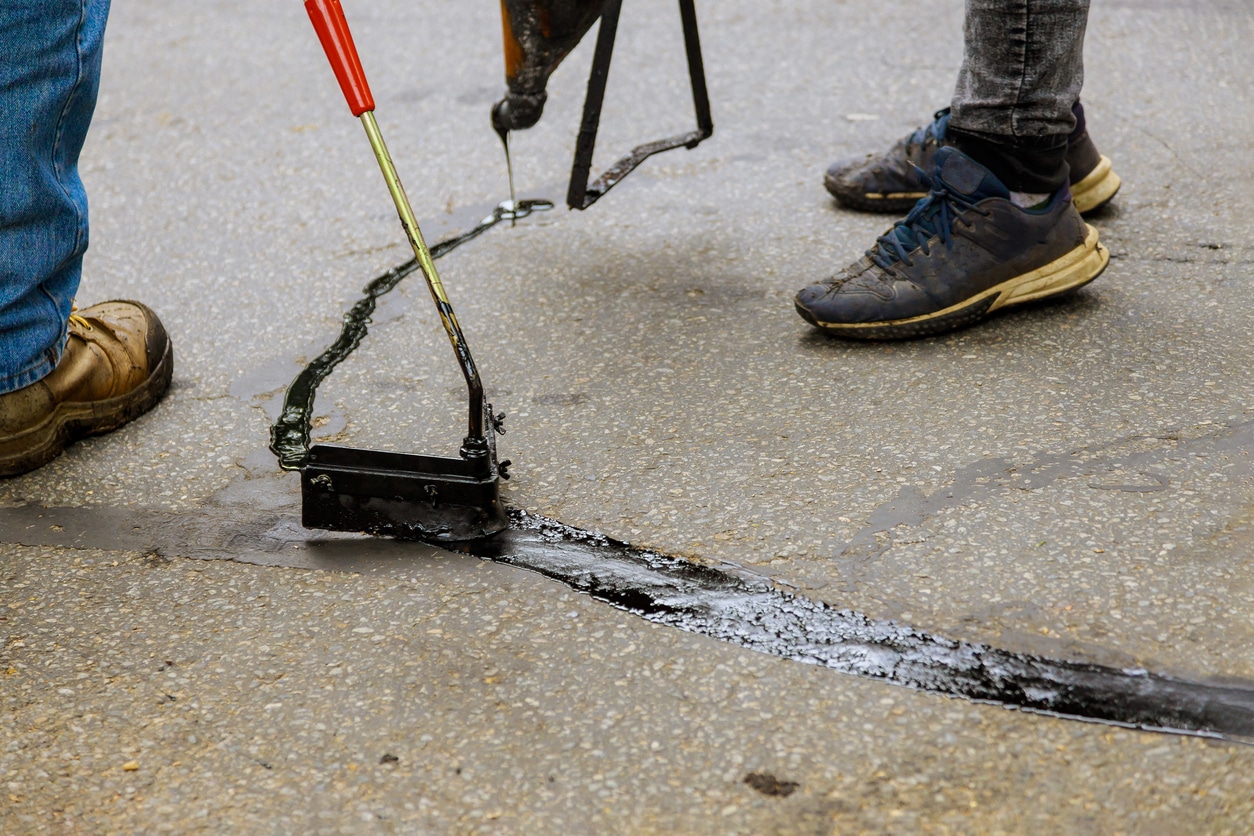Discover the Power of Commercial Car Park Paving and Asphalt Sealing
Discover the Power of Commercial Car Park Paving and Asphalt Sealing
Blog Article
Hot Mix Asphalt: A Sustainable Service for Pavement
Warm Mix Asphalt (HMA) has arised as a leading lasting choice for pavement solutions, using a myriad of environmental advantages and ingenious technologies. As the demand for environment-friendly building and construction techniques grows, discovering the subtleties of HMA's sustainability can provide valuable understandings right into the future of pavement remedies.
Ecological Advantages of Hot Mix Asphalt

Additionally, Warm Mix Asphalt helps to mitigate metropolitan warmth island impacts. Its dark shade absorbs sunshine, minimizing the quantity of warm mirrored back into the environment contrasted to lighter-colored pavements. This can decrease ambient temperatures in metropolitan locations, decreasing the need for air conditioning and eventually reducing power intake.
Furthermore, Warm Mix Asphalt adds to improved stormwater management. Its porous nature enables water to reenergize and penetrate the sidewalk groundwater supplies, lowering overflow and the threat of flooding. These ecological advantages make Warm Mix Asphalt a sustainable choice for leading roadways and freeways.
Power Performance in HMA Manufacturing
Is energy efficiency a critical variable in the manufacturing of Hot Mix Asphalt (HMA)? Power plays a substantial function in the production of HMA, influencing both expense and environmental sustainability. One vital element of energy performance in HMA production is the use of warm mix asphalt (WMA) innovations.
In addition, innovations in plant modern technologies have actually led to more energy-efficient HMA production procedures. By maximizing energy use in HMA production, the market can lower its carbon footprint while preserving premium pavement products.
Recyclability of Hot Mix Asphalt
The recyclability of Hot Mix Asphalt (HMA) is a crucial element of its sustainability and long-lasting environmental influence. HMA is just one of the most recycled products in the United States, with over 100 million lots of reclaimed asphalt sidewalk (RAP) being recycled annually in new pavement building and construction. Recycling HMA supplies a number of environmental advantages, such as decreasing the requirement for virgin products, decreasing power usage during manufacturing, and reducing the quantity of waste sent out to landfills.
The process of recycling HMA entails grating the existing sidewalk, crushing it right into smaller items, and mixing it with brand-new accumulation and asphalt binder to produce a recycled mix. This recycled mix can frequently perform in addition to and even far better than standard HMA, while needing less resources and producing reduced greenhouse gas emissions. By integrating RAP into new sidewalk projects, roadway agencies can save natural deposits, decrease expenses, and minimize the environmental footprint of road construction and upkeep tasks. Generally, the recyclability of HMA plays a considerable duty in promoting sustainable techniques within the pavement industry.

Long-Term Efficiency of HMA
Asphalt sidewalks show durability and resilience over an extended period, mirroring the long-term efficiency of Warm Mix Asphalt (HMA) Furthermore, innovations in HMA innovation, such as the usage of polymer-modified binders and cozy mix asphalt, have actually additionally boosted the longevity and long life of HMA sidewalks. By focusing on top quality building and construction and my review here maintenance practices, HMA proceeds to prove itself as a economical and lasting solution for resilient sidewalk framework.

HMA: Toughness and Sustainability
Demonstrating both sturdiness and sustainability, Warm Mix Asphalt (HMA) has actually become a cornerstone in the building and construction of lasting sidewalk infrastructures - regrading. HMA's durability comes from its capability to hold up against hefty loads, severe weather, and high traffic volumes, making it a reputable option for highways, highways, and airport runways. The make-up of HMA, which typically includes aggregates, binder, and filler, plays an important function in enhancing its long life and resistance to damage
Moreover, HMA's sustainability exists in its recyclability and energy-efficient manufacturing procedure. The ability to recycle recovered asphalt sidewalk (RAP) in new HMA mixes decreases the demand for virgin materials and reduces the environmental impact of pavement building and construction and maintenance. Furthermore, the energy performance of generating HMA depends on its reduced mixing temperatures compared to various other sidewalk materials, resulting in minimized power intake and greenhouse gas emissions.
Conclusion
Finally, hot mix asphalt (HMA) uses a sustainable service for pavement with its eco-friendly qualities. HMA's recyclability, energy performance in manufacturing, and long-lasting resilience make it an environment-friendly choice for roadway building and construction. By saving natural resources, reducing waste, and decreasing greenhouse gas discharges, HMA plays an important function in promoting sustainability in infrastructure development. Its ability to alleviate metropolitan warm island impacts even more underscores its importance in creating resilient and environmentally aware pavement systems.
HMA is one of the most recycled materials in the United States, with over 100 million bunches of reclaimed asphalt browse this site sidewalk (RAP) being reused yearly in brand-new pavement building.The process of recycling HMA involves crushing the existing pavement, squashing it into smaller sized pieces, and mixing it with brand-new accumulation and asphalt binder to create look here a recycled mix.Asphalt pavements show resilience and durability over an extensive period, showing the long-lasting efficiency of Warm Mix Asphalt (HMA) Additionally, improvements in HMA modern technology, such as the use of polymer-modified binders and warm mix asphalt, have additionally boosted the toughness and longevity of HMA sidewalks. The capacity to reuse recovered asphalt sidewalk (RAP) in new HMA blends reduces the demand for virgin products and minimizes the environmental impact of pavement construction and maintenance.
Report this page